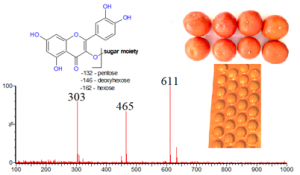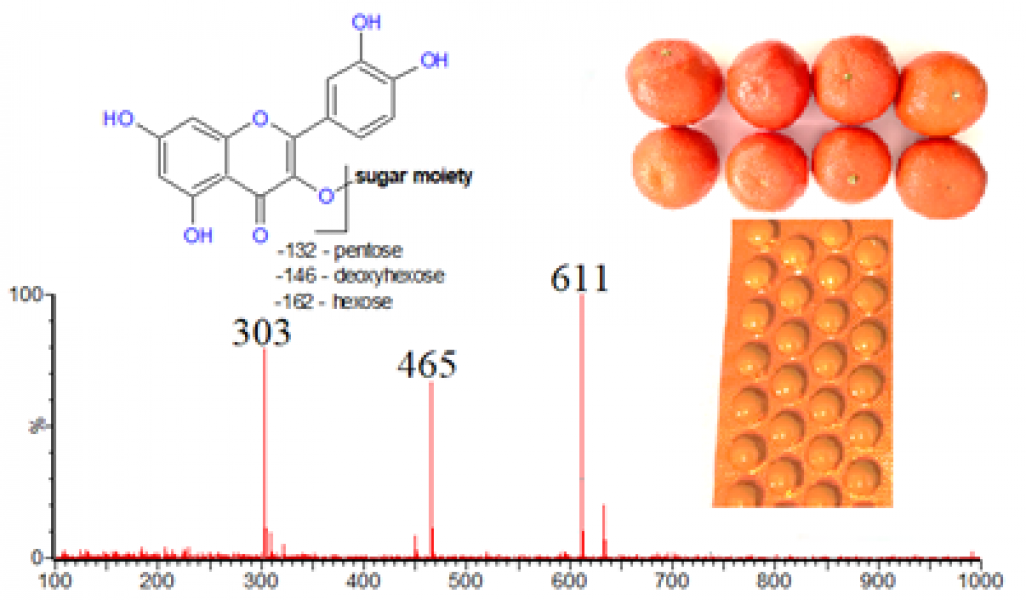Monika Beszterda, Rafał Frański: Comment on “Phenolic profiling and evaluation of in vitro antioxidant, α-glucosidase and α-amylase inhibitory activities of Lepisanthes fruticosa (Roxb) Leenh fruit extracts”, Food Chemistry 2021, 361.
Flavonoids represent a group of polyphenolic secondary metabolites, commonly occurring in plants, so also in the human diet. One of the most important features of flavonoids are their antioxidant properties, thus, their ability to scavenge free radicals, e.g. hydroxylic ones, which has a beneficial effect of reducing the probability of neoplastic diseases and slow down the oxidation of other compounds. Usually flavonoids occur in the form of glycosides. For instance, rutin naturally present in many plants, is a component of a number of pharmaceutical preparations, commonly together with vitamin C, like in rutinoscorbin. Rutin slows down the oxidation of vitamin C and therefore, prolongs its activity.
In investigation of the properties of flavonoid glycosides their correct identification is crucial. At present it is mainly realized through mass spectrometry in combination with liquid chromatography, on the basis of certain specific fragment ions.
In the commented paper by Salahuddin et al. (Food Chemistry 2020, 331, 127240), the authors have proved that the polyphenolic compounds present in the fruit of Lepisanthes fruticosa, show very interesting antioxidating properties. However, the identification of the polyphenolic compounds they presented, e.g. that of rutin, was debatable. Therefore we present a comprehensive discussion, based on reliable references, of the antioxidant properties of the identified compounds and the very process of their identification.


